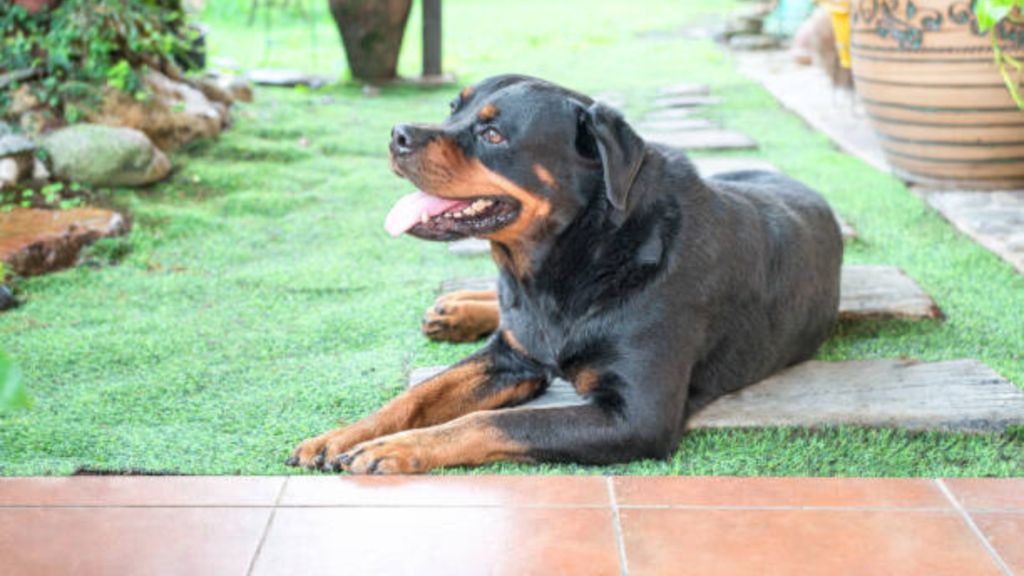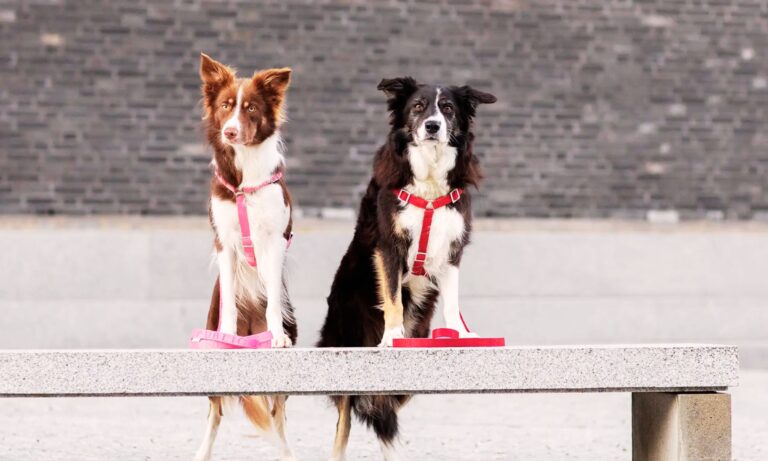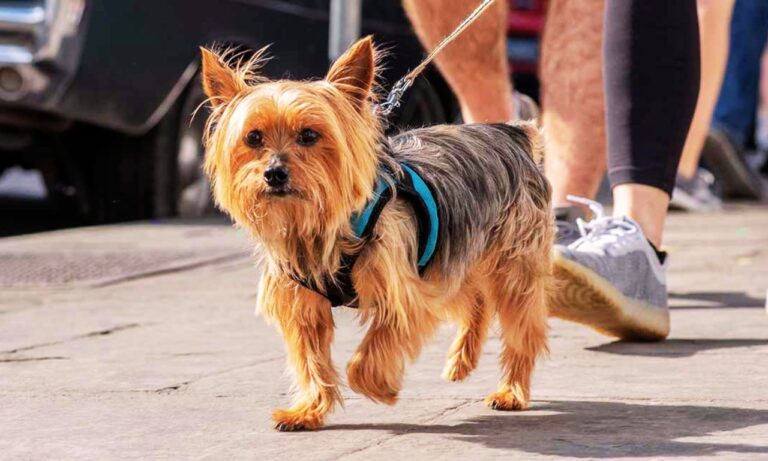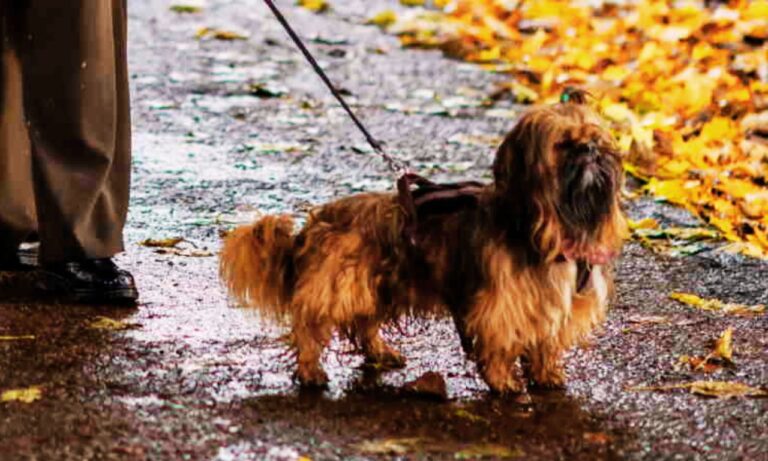| Summary: Male Rottweiler Weight Chart KG: At 2 months, they typically weigh between 7-9 kg, reaching 18-25 kg by 4 months. By 6 months, their weight ranges from 30-38 kg, and they continue growing to 40-50 kg at 9 months. By their first birthday, most males weigh around 45-55 kg, though growth slows after 12 months. Full maturity is reached between 18-24 months, with adult males typically weighing 50-60+ kg, depending on genetics and diet. |
The Rottweiler is a powerful and muscular dog breed, known for its loyalty, intelligence, and protective instincts. If you own a male Rottweiler or are planning to get one, understanding its growth and weight patterns is crucial to ensure a healthy and well-balanced development. Rottweilers grow rapidly in their first year, but their final size is influenced by genetics, nutrition, and exercise.
A male Rottweiler’s weight varies by age, with puppies growing rapidly in their first year. GPS dog collars help track their activity levels to support healthy growth.
I will help you understand the male Rottweiler weight chart kg, provide insights into their growth phases, and answer essential questions regarding their development. By tracking their weight carefully, you can ensure they remain within a healthy range, reducing the risk of obesity or malnutrition.
Blog Highlights
ToggleHow Much Should a Male Rottweiler Weigh at Different Ages?
At 3 months, a male Rottweiler typically weighs between 14-18 kg, and by 6 months, they can reach 30-40 kg. Pet tech products like smart scales assist in monitoring their weight.
A male Rottweiler’s weight varies based on factors such as genetics, diet, and exercise levels. Below is a detailed male Rottweiler weight chart kg, outlining the expected weight range from puppyhood to full maturity.
Male Rottweiler Weight Chart kg – Month-by-Month Growth
| Age (Months) | Minimum Weight (kg) | Maximum Weight (kg) | Average Weight (kg) |
| 1 Month | 3.0 kg | 4.5 kg | 3.8 kg |
| 2 Months | 7.0 kg | 9.0 kg | 8.0 kg |
| 3 Months | 14.0 kg | 17.0 kg | 15.5 kg |
| 4 Months | 20.0 kg | 24.0 kg | 22.0 kg |
| 5 Months | 27.0 kg | 32.0 kg | 29.5 kg |
| 6 Months | 34.0 kg | 38.0 kg | 36.0 kg |
| 7 Months | 38.0 kg | 43.0 kg | 40.5 kg |
| 8 Months | 41.0 kg | 47.0 kg | 44.0 kg |
| 9 Months | 44.0 kg | 50.0 kg | 47.0 kg |
| 10 Months | 46.0 kg | 53.0 kg | 49.5 kg |
| 11 Months | 48.0 kg | 55.0 kg | 51.5 kg |
| 12 Months (1 Year) | 50.0 kg | 58.0 kg | 54.0 kg |
| 18 Months (1.5 Years) | 52.0 kg | 60.0 kg | 56.0 kg |
| 24 Months (2 Years) | 54.0 kg | 61.0 kg | 57.5 kg |
👉 Key Takeaway: A fully grown male Rottweiler typically weighs between 54 to 61 kg by the age of 2 years.
When Do Male Rottweilers Reach Their Full Size?
Rottweilers grow quickly in their first six months, but their final size is achieved between 18 to 24 months. However, even after reaching their maximum height and weight, some Rottweilers continue developing muscle mass up to three years of age.
By 12 months, most males weigh around 40-50 kg, but they continue filling out until age 2-3. Electronic dog collars aid in training through different growth stages.

During the first year, their growth is more noticeable in height. By the age of 12 months, most male Rottweilers reach 80-90% of their final height, but their body continues filling out. The second year focuses more on muscle development and strengthening their bones, making them appear stockier.
Genetics play a significant role in determining when a Rottweiler reaches full size. Some bloodlines mature faster than others, and environmental factors such as diet and exercise impact their development. If your Rottweiler seems smaller than expected, it is important to assess their nutrition and activity levels.
👉 Fact: Even after reaching full weight, some Rottweilers continue to build muscle mass up to 3 years old.
Why Do Some Rottweilers Weigh More or Less Than Average?
While the weight chart provides a general guideline, individual Rottweilers may weigh slightly more or less than the average due to various factors.

- Genetics: A Rottweiler’s size depends largely on its bloodline and breeding history. Some working-line Rottweilers tend to be leaner and more agile, whereas show-line Rottweilers are often bulkier and more muscular. If your dog’s parents were larger or smaller than average, your Rottweiler’s weight will reflect that.
- Diet and Nutrition: Proper nutrition is essential for steady growth. Puppies need a high-protein diet to support muscle and bone development. If a Rottweiler isn’t receiving enough calories or essential nutrients, it may experience stunted growth. Conversely, overfeeding can lead to excessive weight gain and joint issues.
- Exercise Levels: Rottweilers are active dogs that require regular exercise to maintain a healthy weight. A sedentary lifestyle can lead to obesity, while excessive exercise at a young age can cause joint problems. Striking the right balance between physical activity and rest is key to optimal development.
👉 Tip: If your Rottweiler is under or overweight by more than 10% of the standard weight range, consult a veterinarian.
How to Ensure a Healthy Weight for Your Male Rottweiler?
Maintaining an ideal weight is essential for a Rottweiler’s overall health, mobility, and lifespan. Here’s how you can support your dog’s healthy development:

1. Provide a High-Quality Diet
A well-balanced diet ensures proper growth and prevents obesity. Look for high-quality commercial or homemade meals that contain:
- 22-26% protein to support muscle development
- 12-16% fat for energy and coat health
- Essential vitamins and minerals for bone strength
Avoid processed foods, excess carbohydrates, and low-quality fillers, as they contribute to excessive weight gain without providing necessary nutrients.
2. Exercise and Activity
Exercise requirements change as a Rottweiler grows.
- Puppies (under 6 months): Short, controlled play sessions and walks (15-30 minutes).
- Juveniles (6-12 months): Moderate exercise, including short runs and basic agility training.
- Adults (1+ years): Daily 60-90 minutes of exercise, including structured activities like hiking, running, or swimming.
Mental stimulation is just as important as physical activity. Training exercises, obedience drills, and puzzle toys help keep their minds engaged.
3. Regular Weight Monitoring
Weighing your Rottweiler every 2-4 weeks ensures they remain on track. Sudden weight loss or gain can indicate underlying health issues such as metabolic disorders, parasites, or poor digestion.

A healthy Rottweiler should have a visible waistline when viewed from above and a slight tuck in the abdomen when viewed from the side. You should be able to feel their ribs without excessive fat covering them.
4. Veterinary Check-Ups
Routine veterinary check-ups help detect early signs of obesity, joint problems, or nutritional deficiencies. Discuss the need for supplements like glucosamine and chondroitin, which support joint health and overall mobility.
A fully grown male Rottweiler typically weighs 50-60 kg, requiring a balanced diet and regular exercise. Dog training equipment ensures they stay active and maintain muscle strength.
👉 Did You Know? Rottweilers with an ideal weight live 1-2 years longer than overweight Rottweilers.
How Does Neutering Affect a Male Rottweiler’s Weight?
Neutering is a common procedure that affects a male Rottweiler’s metabolism and weight distribution. Many owners wonder whether their dog’s weight will change significantly after the surgery.
1. Metabolic Changes and Weight Gain Risks
After neutering, a Rottweiler’s metabolism slows down by 20-30%, meaning they burn fewer calories than before. If diet and exercise are not adjusted accordingly, the risk of weight gain increases. Studies show that neutered dogs are twice as likely to become overweight compared to intact dogs.
2. Muscle Retention and Fat Distribution
Neutered Rottweilers tend to store more fat around the abdomen and chest due to hormonal changes. However, with a high-protein diet (22-26% protein) and regular exercise, they can maintain their muscular build. Strength-based activities like weight pulling, hiking, or agility training can help preserve muscle mass.
3. Adjusting Diet and Exercise Post-Neutering
To prevent weight gain:
✔ Reduce daily calorie intake by 10-20% after neutering.
✔ Increase fiber and protein intake to maintain muscle and prevent hunger.
✔ Ensure at least 60-90 minutes of physical activity per day.
👉 Fact: Rottweilers neutered before 1 year of age may experience delayed growth plate closure, leading to taller but leaner dogs.
For a comprehensive guide on what kind of harness is best for a Pomeranian, including comfort and safety tips, check out this article.
What Are the Risks of an Overweight Male Rottweiler?
Maintaining a healthy weight is crucial for a Rottweiler’s longevity, mobility, and overall health. Being overweight can lead to serious medical conditions that shorten their lifespan.

1. Joint and Bone Issues
Rottweilers are already prone to hip and elbow dysplasia, and extra weight puts excess strain on their joints, worsening these conditions. Studies show that every 1 kg of extra weight increases joint stress by 10%, leading to pain and mobility problems.
2. Increased Risk of Heart Disease
Overweight Rottweilers are at a higher risk of developing heart disease and high blood pressure. Extra fat increases inflammation in the body, which can lead to cardiovascular problems. Maintaining an ideal weight reduces the risk of heart failure by 40%.
3. Shortened Lifespan
Obese Rottweilers have a lifespan that is 1-2 years shorter than their lean counterparts. Excess fat contributes to metabolic diseases like diabetes, liver issues, and a weakened immune system.
👉 Tip: If your Rottweiler is 10-15% over the ideal weight, consult a vet to create a weight-loss plan involving portion control, exercise, and dietary adjustments.
By keeping your Rottweiler at a healthy weight, you ensure they live a longer, more active, and pain-free life.
Discover if the American Eskimo is a guard dog and learn about its suitability for protecting your home.
Final Thoughts: How Big Should Your Male Rottweiler Be?
By understanding the male Rottweiler weight chart kg, owners can ensure their dogs grow into strong and healthy adults. Maintaining proper weight is more important than hitting an exact number on the scale.
Key Takeaways:
✅ Monitor weight regularly to ensure healthy growth
✅ Adjust diet and exercise based on body condition
✅ Seek veterinary advice if weight is significantly above or below normal
By following a structured feeding plan, exercise routine, and regular check-ups, you can ensure your Rottweiler develops into a powerful, healthy, and happy companion.Learn about the size collar for an American Eskimo to ensure a perfect fit and comfort for your dog.





